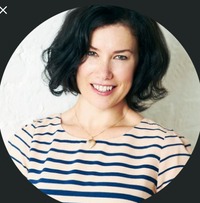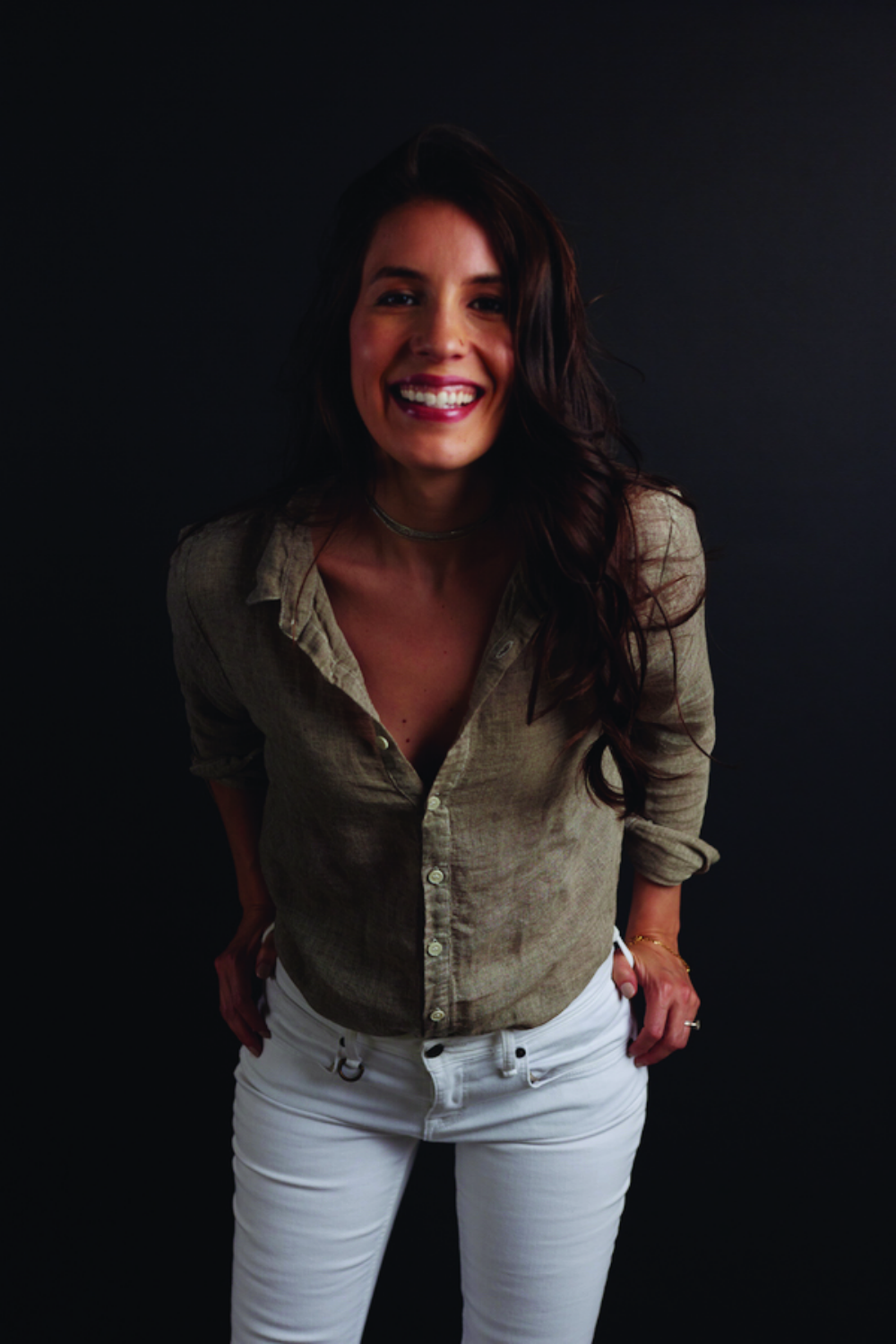How to be selfish (without anyone realising) and live a more fulfilling life
Feel like Groundhog day's on a loop, your motivation's moved out and anxiety's moved in? Writer and leadership coach Majo (that's Ma-ho) Molfino knows exactly what you mean, sharing simple daily tweaks you need to make


Feel like Groundhog day's on a loop, your motivation's moved out and anxiety's moved in? Writer and leadership coach Majo (that's Ma-ho) Molfino knows exactly what you mean, sharing simple daily tweaks you need to make
Let’s face it, we live in anxiety-ridden times. We’re anxious about our health, finances and the future. With so much uncertainty and challenges ahead of us, how can we build our resilience? Dare I say, how to be selfish? And by that I mean, it's time to think of what's best for your 'self'. How to be selfish is a good thing. In my new book, Break The Good Girl Myth, I lay out five good girl myths every woman must overcome to lead a better and more fulfilling life.
These good girl myths are coping strategies. We think they'll keep us safe in the world but ultimately they're disempowering. They are the Myth of Rules, the Myth of Perfection, the Myth of Logic, the Myth of Harmony, and the Myth of Sacrifice. During times of chaos and uncertainty, it's tempting to buckle down on these good girl myths as a way to feel in control.
How to be selfish - stop overgiving
But we must resist this temptation, especially when it comes to the Myth of Sacrifice - putting other people’s needs before our own at the expense of our own wellbeing. Ditto the Myth of Perfection, that's 'hyper achieving' (and making it look perfectly effortless), it's also a way of numbing ourselves and escaping from reality. When we’re overgiving - whether it's in our relationships or in work - we're leaving very little time for ourselves. And we need time for ourselves right now. We need to take care of our bodies, minds, and hearts, now more than ever.

Self-care isn’t something we 'have to do' or check off our to-do list. I'm not talking about fixing, shaming, or correcting ourselves. It’s about listening to our bodies and giving her what she needs. Self-care is an expression of our self-worth and self-love. It’s a radical, continuous practice of prioritizing our wellbeing in a world that tells women it's selfish to do so. It’s also our biggest buffer against anxiety.
I want to empower you to become your own at-home ritual designer. You can adjust your ritual to be as short as five minutes during the week or as long as two hours every weekend. Unlike habits (which are fixed and repeatable), rituals are more fluid and flexible, which makes them fun and easy to design.
How to be selfish - four easy self-care rituals
1. Write out your current morning or evening routine
Let’s begin where you are. Choose whether you want to work with your morning or evening routine. It’s best to work with the time of day you think will be easiest for you to change. How do you currently move through this routine? List out all the activities and it’s OK if your current routine has a lot of variety in it – a rough list is fine.
Celebrity news, beauty, fashion advice, and fascinating features, delivered straight to your inbox!
2. Identify one self-care behaviour you can weave in
What’s a self-care activity that would nourish your mind, body, or soul? It can be tempting to think in terms of short-term pleasure, Netflix anyone? But ask yourself: is that truly nourishing? Focus on nourishment. My recommendation is to choose an activity that falls into one of these four categories: food and water, sleep, exercise and movement, or mental rest and clearing. For instance, drinking a few glasses of water with lemon, a yoga class, a warm bath, and/or a mindfulness meditation.

3. Find an anchor behaviour
Let’s weave this new self-care activity into your current routine. How? Identify an anchor from your current routine. What’s an anchor? According to Dr BJ Fogg, Stanford professor and behaviour designer, anchors help people develop tiny habits because they’re existing behaviours you can attach a new one to. An anchor is a behaviour you do without fail, every day. Anchors can be very small and automatic, like raising the blinds in the morning or getting out of bed. Put your new self-care activity right after your anchor. Tell yourself: 'After I brush my teeth, I will sit down and meditate for five minutes.' Write your new ritual down and put it somewhere you can see.
4. Experiment with your ritual
I believe rituals are prototypes that can evolve and change as you experiment with what works best. This means when you do your ritual, take some time afterwards to journal about what worked and what didn’t work. Was your activity truly nourishing? Did you choose the best anchor? What distractions came up for you? How can you limit those distractions? Did feelings of guilt emerge for you taking this time for yourself? How might you work with those feelings of guilt? In my book, I offer access to exclusive meditations, such as the Self-Compassion Meditation and Emotional Boundaries Meditation that can support you in working with any difficult emotions around doing your self-care.
* Break the Good Girl Myth by Majo Molfino (published by HarperOne) is out now
* Majo Molfino is an Argentine-American author, designer, and women’s leadership expert. She's the host of the HEROINE podcast, featuring top female leaders, creatives, and visionaries. Her leadership program, IGNITE, guides women to design and share a creative dream with the world.
Maria Coole is a contributing editor on Marie Claire.
Hello Marie Claire readers – you have reached your daily destination. I really hope you’re enjoying our reads and I'm very interested to know what you shared, liked and didn’t like (gah, it happens) by emailing me at: maria.coole@freelance.ti-media.com
But if you fancy finding out who you’re venting to then let me tell you I’m the one on the team that remembers the Spice Girls the first time round. I confidently predicted they’d be a one-hit wonder in the pages of Bliss magazine where I was deputy editor through the second half of the 90s. Having soundly killed any career ambitions in music journalism I’ve managed to keep myself in glow-boosting moisturisers and theatre tickets with a centuries-spanning career in journalism.
Yes, predating t’internet, when 'I’ll fax you' was grunted down a phone with a cord attached to it; when Glastonbury was still accessible by casually going under or over a flimsy fence; when gatecrashing a Foo Fighters aftershow party was easy-peasy-lemon-squeezy and tapping Dave Grohl on the shoulder was... oh sorry I like to ramble.
Originally born and bred in that there Welsh seaside town kindly given a new lease of life by Gavin & Stacey, I started out as a junior writer for the Girl Guides and eventually earned enough Brownie points to move on and have a blast as deputy editor of Bliss, New Woman and editor of People newspaper magazine. I was on the launch team of Look in 2007 - where I stuck around as deputy editor and acting editor for almost ten years - shaping a magazine and website at the forefront of body positivity, mental wellbeing and empowering features. More recently, I’ve been Closer executive editor, assistant editor at the Financial Times’s How To Spend It (yes thanks, no probs with that life skill) and now I’m making my inner fangirl’s dream come true by working on this agenda-setting brand, the one that inspired me to become a journalist when Marie Claire launched back in 1988.
I’m a theatre addict, lover of Marvel franchises, most hard cheeses, all types of trees, half-price Itsu, cats, Dr Who, cherry tomatoes, Curly-Wurly, cats, blueberries, cats, boiled eggs, cats, maxi dresses, cats, Adidas shelltops, cats and their kittens. I’ve never knowingly operated any household white goods and once served Ripples as a main course. And finally, always remember what the late great Nora Ephron said, ‘Everything is copy.’
